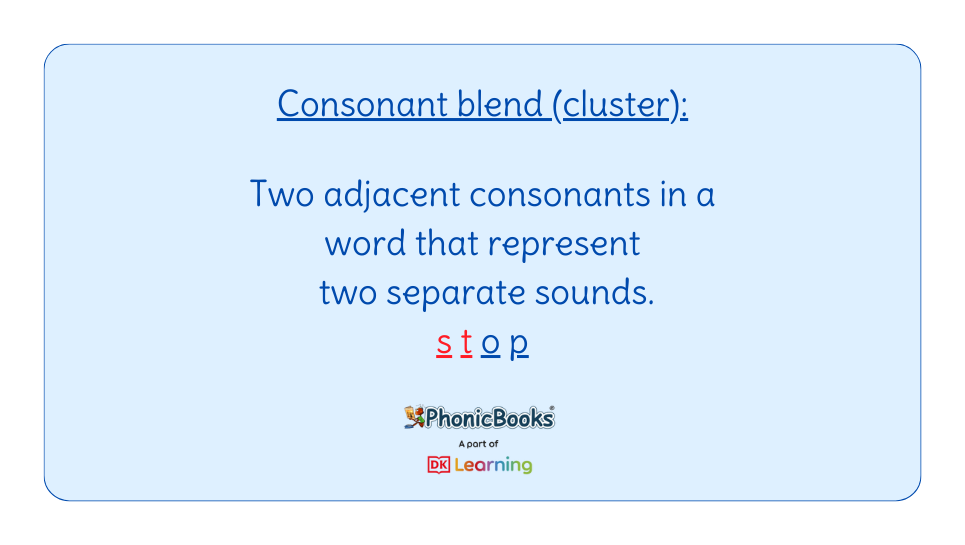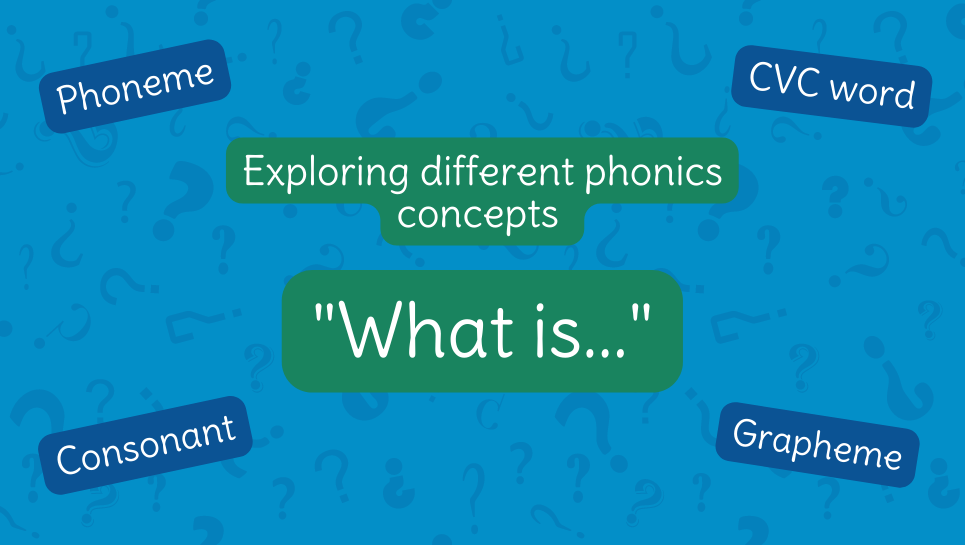In our ‘what is…’ series we’re taking things back to basics! From phonics to decoding, blending and more, we’re going to break things down and give you our expert advice on each area, to help answer any questions you may have around teaching reading.
***
A consonant blend or consonant cluster is when two or more consonants are adjacent in a word. Another term used for this spelling pattern is ‘adjacent consonants’.
It is important to emphasise that these consonants represent separate sounds, unlike consonant digraphs which are two adjacent consonants that represent one sound, e.g., ‘sh’ in the word ‘sh i p’.
Examples of words with consonant blends:
In the word ‘ant’ the letters ‘n’ and ‘t’ create a consonant blend (cluster) at the end of the word. This word has three sounds (phonemes) with a VCC structure (vowel-consonant-consonant).
In the word ‘limp’ the letters ‘m’ and ‘p’ create a consonant blend (cluster) at the end of the word. This word has four sounds with a CVCC (consonant-vowel-consonant-consonant) structure.
In the word ‘crab’ the letters ‘c’ and ‘r’ create a consonant blend (cluster) at the beginning of the word. This word has a CCVC (consonant-consonant-vowel-consonant) structure.
In the word ‘print’ there are consonant blends (clusters) at the beginning and at the end of the word. This word has five sounds with a CCVCC (consonant-consonant-vowel-consonant-consonant) structure.
In the word ‘strip’ the first three letters are a consonant blend (cluster). This word has a CCCVC (consonant-consonant-consonant-vowel-consonant) structure.

Why is this important?
Beginner readers learn to sound out letters and blend them into words. Many struggle to blend consonant blends (clusters) in the same way that toddlers often drop consonants from their first words, e.g., they will say ‘top’ or ‘sop’ for ‘stop’. This may be because they can’t hear the sounds clearly as some sounds get gobbled up in speech. As a result, they may not be able to pronounce all the consonants in the word yet.
With beginner readers, we often observe difficulties with consonant blends when they spell a word. They may omit a consonant, usually the ‘inside adjacent consonant’. For example, they may spell the word ‘frog’ as ‘fog’, omitting the sound /r/, or the word ‘limp’ as ‘lip’, omitting the sound /m/.
Blending sounds together takes place in working memory which is very limited and fleeting. Words with consonant blends can be problematic. The more sounds in the word, the harder it is for the student to hold onto them in working memory to blend them together. Children who can blend three-sound CVC words may stumble when blending words with consonant clusters.
Reasons for this difficulty may be that the student has not processed all the sounds in the word or that they are struggling to hold onto and blend four or more sounds into a word. By the time the student reaches the last sounds in the words, the first sounds may have been forgotten. It is important to introduce words with consonant blends in the order of difficulty: VCC, CVCC, CCVC, CCVCC and CCCVC, as listed above.


